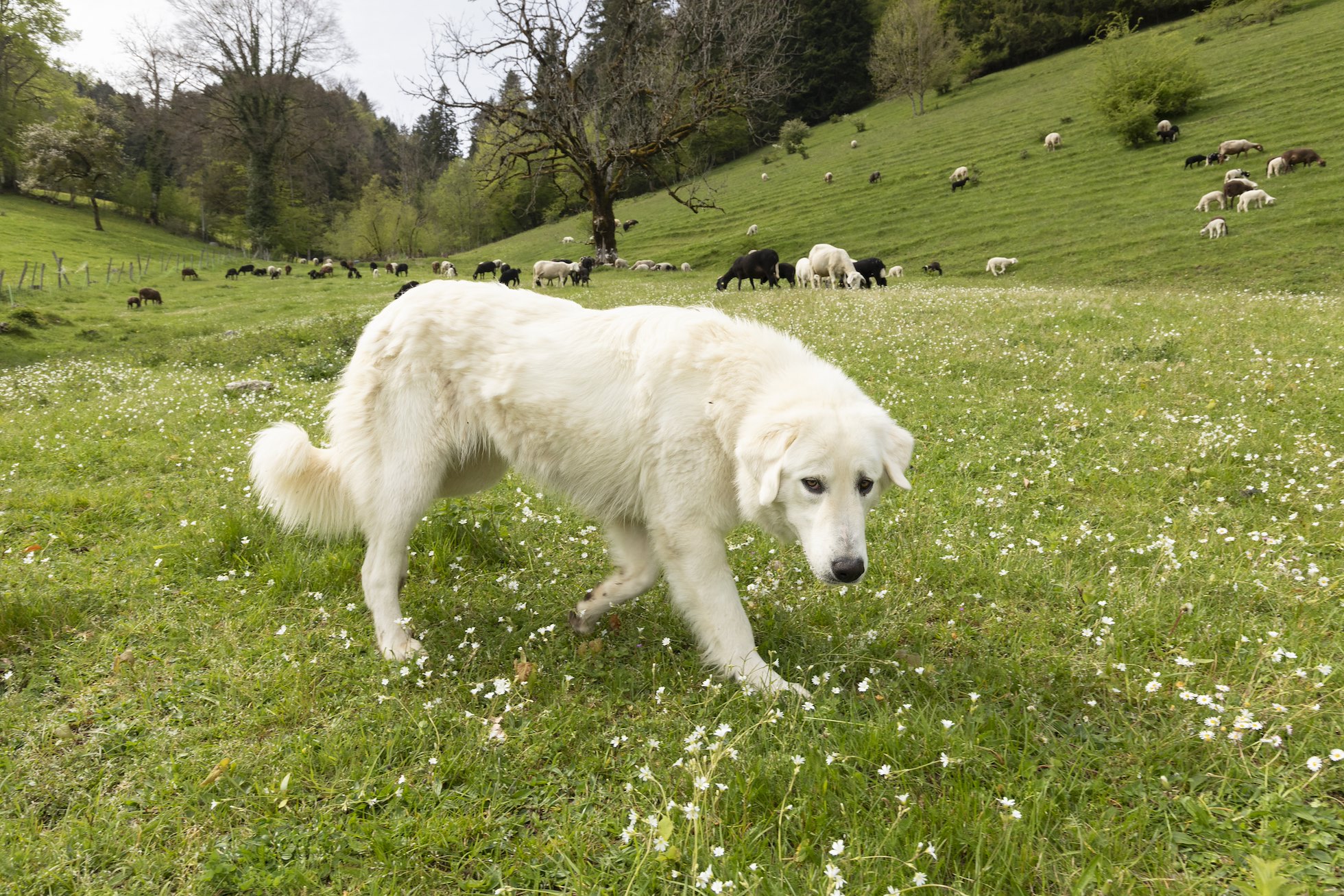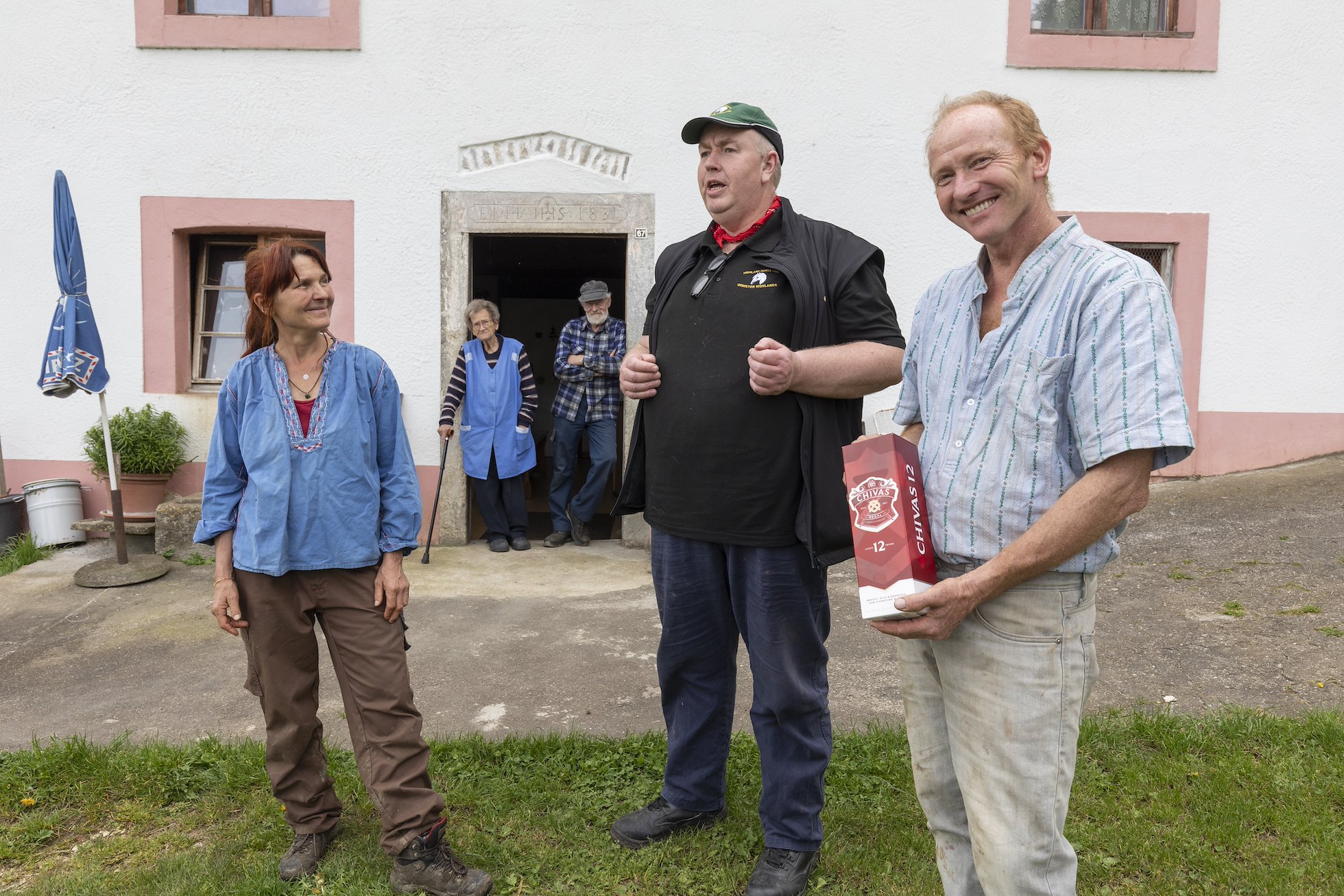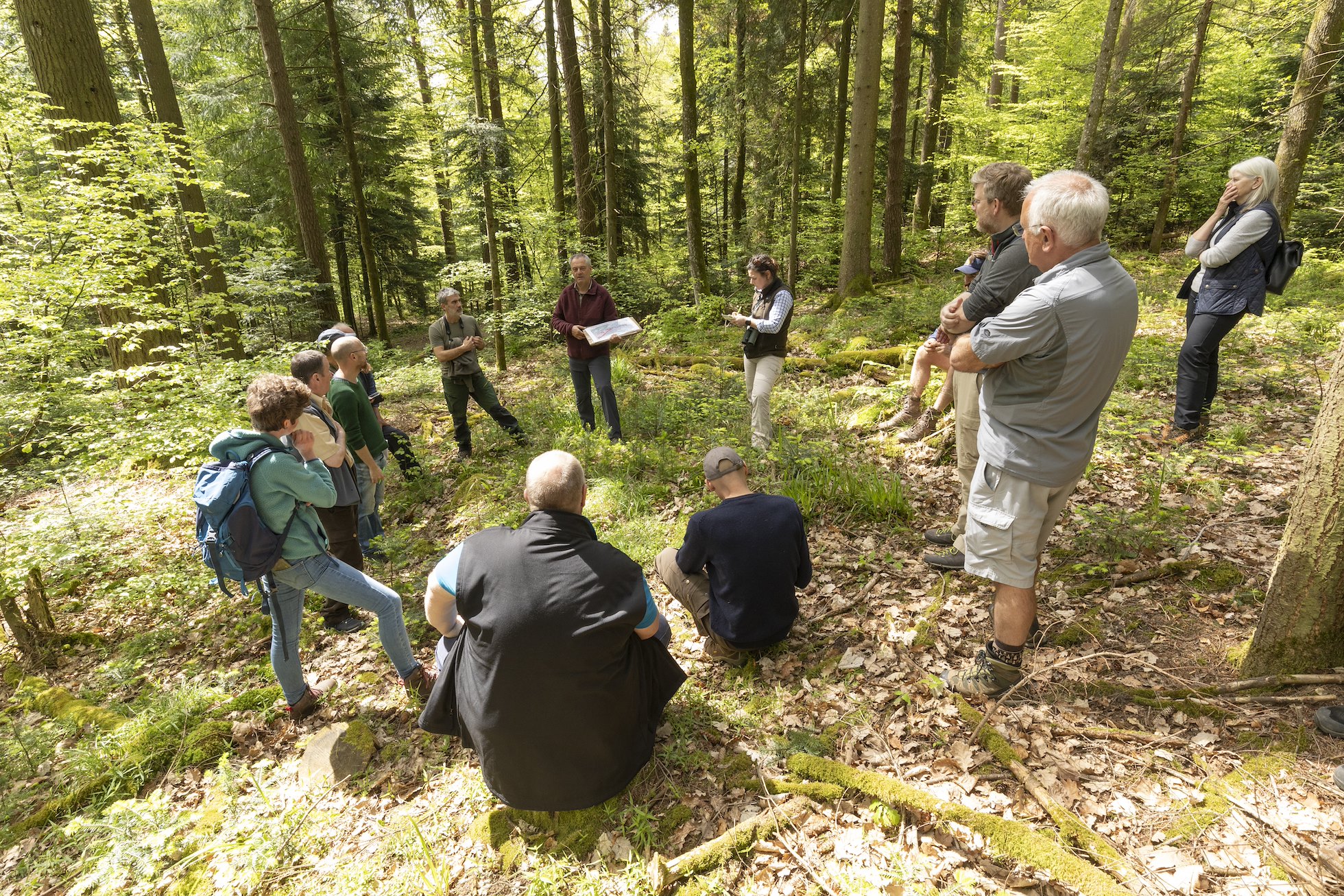Swiss watch: Lessons on living with lynx
A recent trip to Switzerland provided Scottish stakeholders with intriguing insights into coexistence with lynx, but questions remain about how Scotland could accommodate lynx as part a fully functioning ecosystem, while treating farmers fairly and protecting hunters’ interests.
The first thing I noticed looking down from the plane was how green everything looked. Spring was obviously further advanced here than in the leafless April I’d just left behind in Scotland. But I hadn’t journeyed to Switzerland just to escape the long winter back home. Together with two colleagues from the Lynx to Scotland project, I was escorting a group of farmers, hunters and foresters, plus representatives from the Cairngorms National Park, on a trip to learn more about Switzerland’s lynx reintroduction experience.
The Swiss were the first in Central or Western Europe to reintroduce lynx, releasing the first cats over 50 years ago. Today, the country is home to more than 250 lynx – alongside a similar number of wolves. By comparison, Scotland remains one of only a handful of European countries still missing all its native large carnivores. Notably, the total area of woodland cover in Switzerland is almost identical to that of Scotland, but the country sustains a much higher human population density – there are 8.7 million Swiss crowded into 41,285km2 versus 5.5 million Scots spread out over 77,910km2.
Following separate reintroductions, lynx are now found in both the Swiss Alps and the Jura Mountain ranges. Livestock are often secured at night in the Swiss Alps and, increasingly, accompanied by shepherds during the day, but our study tour focused on the Jura region, where sheep are still mostly left unsupervised in small, fenced paddocks, occasionally accompanied by livestock guardian dogs.
By comparison, Scotland remains one of only a handful of European countries still missing all its native large carnivores.

Sheep are typically kept in fenced enclosures within the wooded Jura landscape. The use of guardian dogs has increased since wolves have also returned to this landscape, but no protection measures are infallible.
In the 1980s and 90s, livestock losses were greatest in the Swiss Alps, reaching a peak around the turn of the millennium, when 221 livestock were recorded lost to lynx. This led to formalised support for both the prevention of losses and compensation against damages, as well as a policy for the removal of ‘problem lynx’. Livestock losses subsequently declined and then stabilised, averaging between 20 and 40 each year. However, since 2017, the number of livestock lost to lynx attacks across Switzerland has increased slightly, although losses remain far below the millennial peak.
The impact of lynx on livestock thus varies over time, linked to the availability of wild prey as well as changes in husbandry. Normally, 90% of the lynx’s diet is made up of roe deer and chamois but following heavy hunting pressure and several harsh winters, the roe deer population in the Alps crashed in the late 1970s, with lynx switching more of their attentions to sheep. The same thing also happened in the 1990s: there was a decline in the roe deer population leading to more attacks on livestock, and an increase in conflict.
The lesson seemed to be that lynx and deer populations require dynamic management, where deer densities are kept high enough that lynx are not forced to turn to sheep, but not so high that deer browsing inhibits woodland regeneration. In the Alps, lynx numbers are increasing again, alongside a decrease in roe deer numbers. However, lynx are now producing fewer offspring, so there is speculation that the population will stabilise in keeping with the availability of natural prey.
The impact of lynx on livestock varies over time, linked to the availability of wild prey as well as changes in husbandry.
Our group was keen to meet farmers who had suffered lynx attacks and so, with the help of Dr Fridolin Zimmermann and his colleague Dr Kristina Vogt from KORA – a foundation responsible for wildlife management within Switzerland – we had arranged a visit to a recent conflict hot spot at Bergerie de Froidevaux, a sheep farm near Soubrey managed by Claudia Raimann and her partner Michel.
Claudia tells us a story that powerfully illustrates how bold lynx can be, as she describes a lynx that killed one of her lambs stubbornly refusing to abandon its kill, even when she shone a light on it from just a few metres away. On another occasion, she tells us that a lynx killed 12 of her animals in just one night. She was further frustrated that when dead animals could not be recovered, there was no compensation available.
Compensation is only paid in Switzerland when a lynx (or a wolf) is confirmed as the predator and a carcass is recovered. If attacks continue, a lynx can be removed (trapped or shot by a warden) but only if it is confirmed to have killed at least 15 sheep in less than 12 months, with all these attacks needing to have occurred within a 5km radius, or else be linked to the identity of a specific lynx (determined by camera trap footage set up at carcasses).
Before a lynx can be removed, three key criteria must also be met: firstly, the authorities must be satisfied that removal is the only option. Secondly, the lynx’s removal must not threaten the health or viability of the population. And thirdly, reasonable attempts must have been made to secure livestock from attack. This third criterion prompted debate within our group about what constituted ‘reasonable’, and we learned that in the Jura region, the authorities have adopted a case-by-case approach.
‘Why did they bring the lynx here? I don’t understand.’
Since the first authorisation to shoot a lynx was granted in 1997, only 13 more lynx have been culled, the last of which was in 2003. In 50% of cases where lynx have been removed, no further damage was reported from that location, suggesting that the individual lynx was indeed the problem, but in the other 50% of cases, attacks continued, suggesting that local conditions were contributing to create a hot spot of predation by more than one cat.
Prior to the recent spate of attacks, Claudia tells us they had enjoyed a long period with no problems, but when I ask if she would like to be able to shoot lynx, she admits that sometimes she would. ‘We had to change very much. We have now very, very, very much more work,’ she says. ‘Not just due to the lynx, but the wolf also.’ Still, Claudia feels that: ‘The lynx is okay, if it stays in the forest.’ Michel, on the other hand, feels less positively disposed towards the lynx. She says he sometimes asks her, ‘Why did they bring the lynx here? I don’t understand. Nobody asked us.’

Having enjoyed incredible hospitality from the Swiss farmers in the Jura, Ruaridh Ormiston expresses our collective thanks with a bottle of whisky and a song!
Claudia and Michel’s testimony highlights some key lessons Fridolin says they have learned from the reintroductions here in Switzerland – namely that the official response to problem animals has sometimes been too slow, and that the original reintroduction should have been preceded by a proper public consultation. He also recommends that if Scotland does reintroduce lynx, a public database of livestock losses should be maintained, in the interests of transparency and trust-building.
‘The more complex the forest, the more resistant, multifunctional and productive it is.’
Over the three days of our tour we meet more farmers, a forester, several local hunters and various local officials. None appear vehemently anti-lynx. The president of the Jura hunters’ association tells us lynx are part of nature and so: ‘It would be wrong for hunters to resent them!’ Pascal Junod, the forester we meet at Boudry, is positively evangelical about the benefits of lynx and their importance within a healthy, complex forest. ‘The more complex the forest, the more resistant, multifunctional and productive it is in the long term,’ he says. Having met Pascal, we’re not surprised to learn that the original lynx reintroduction to Switzerland was led by similarly progressive foresters.

Pascal Junod explains the principles of Swiss forestry, focused on 'heritage', 'resource' and 'emotion'. He is evangelical about the important role of lynx within a healthy forest.
National surveys indicate very high popularity ratings for the lynx. But Switzerland also has a generous compensation programme supported by additional funding to mitigate conflicts. Could Scotland achieve a similar balance, walking the tightrope between treating farmers fairly, protecting hunters’ interests and maintaining native species within healthy ecosystems? It remains to be seen.
One thing appeared clear from our trip: Scotland is neither too small nor too crowded to support a large carnivore and it certainly has enough habitat and prey to support lynx. In Switzerland the lynx is proving adaptable and increasingly expanding its range into the more densely populated central plateau. We were shown data from one collared female that had set up a territory close to Bern airport in a landscape of fields, small towns and roads. It didn’t look like a wilderness. It could have been lowland Scotland.

In a striking demonstration of their adaptability, a female lynx equipped with a tracking collar, established a territory and had kittens near Switzerland’s Bern airport. Image courtesy of KORA.ch
As we prepare to leave Switzerland, someone asks me if I think the trip has been a success. I think about the question for a moment. Plainly, many of our group still have reservations about a lynx reintroduction – not least due to concerns about whether the Scottish authorities would respond to conflicts as reasonably as the Swiss. But there also seems to be a general feeling that the conflicts they have witnessed haven’t been as bad as they had imagined.
‘I think so,’ I reply. We’ve certainly all learned a lot, and not just about the Swiss experience with lynx. We’ve also had a chance to discuss our own concerns, perspectives and motivations relating to lynx, away from the toxic discourse on social media, within a mutually respectful atmosphere of shared curiosity. At the end of our trip, it feels like our shared experience has at least helped move the debate forward, revealing how coexistence can be managed, but also helping to focus thoughts on the challenges unique to Scotland.

